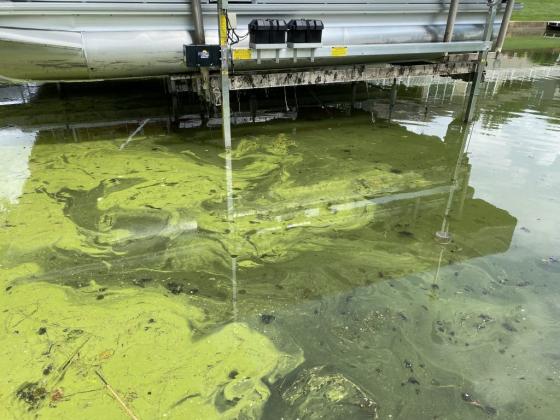The Florida Department of Health in Osceola County has issued a Health Alert for the presence of harmful blue-green algal toxins in Lake Marian, south of the boat ramp off Lakeside Boulevard.
This is in response to a water sample taken on June 1. The public should exercise caution in and around Lake Marian, and take these precautions recommended by the Health Department:
- Do not drink, swim, wade, use personal watercraft, water ski or boat in waters where there is a visible bloom.
- Wash your skin and clothing with soap and water if you have contact with algae or discolored or smelly water.
- Keep pets away from the area. Waters where there are algae blooms are not safe for animals. Pets and livestock should have a different source of water when algae blooms are present.
- Do not cook or clean dishes with water contaminated by algae blooms. Boiling the water will not eliminate the toxins.
- Eating fillets from healthy fish caught in freshwater lakes experiencing blooms is safe. Rinse fish fillets with tap or bottled water, throw out the guts and cook fish well.
- Do not eat shellfish in waters with algae blooms.
Blue-green algae is common in Florida freshwater. A bloom occurs when rapid growth of algae leads to an accumulation of individual cells that discolor water and often produce floating mats that emit unpleasant odors.
Some environmental factors that contribute to blue-green algae blooms are sunny days, warm water temperatures, still water conditions — all of which have been present this month before this weekend's rains — and excess nutrients. Blooms can appear year-round but are more frequent in summer and fall. Many types of blue-green algae can produce toxins.
Blue-green algae blooms can impact human health and ecosystems, including fish and other aquatic animals, so it can be harmful.
For more information on of algal blooms and their health risks, visit floridahealth.gov/environmental-health/aquatic-toxins.
If you see an algal bloom, contact the Florida Department of Environmental Protection at 855-305-3903 or report online. The DEP collects and analyzes algal bloom samples.




